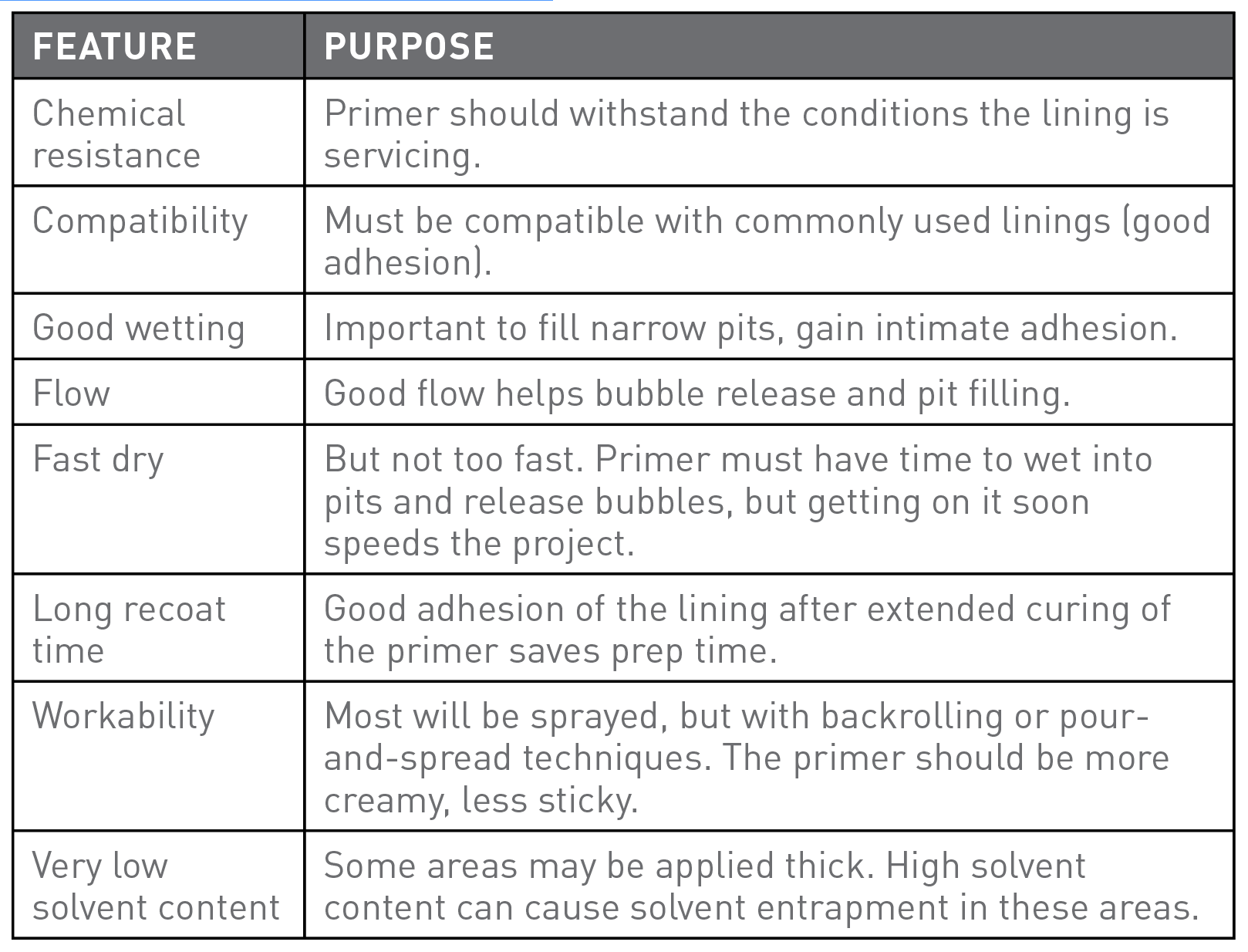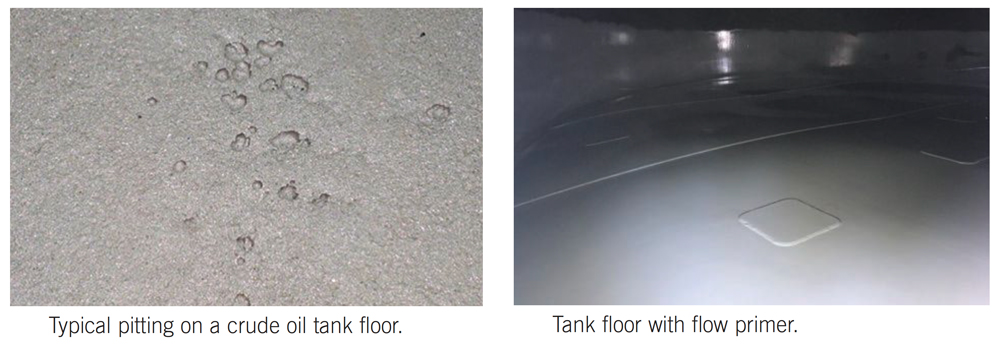Filling Primers Improve Lining Quality in Crude Oil Tanks
Originally Published: BIC, September 2018
The trend of high-build, single-coat tank linings continues. What’s not to like? These linings save labor, place tanks in service quickly and are very durable. They have sag resistance to achieve one-coat protection on vertical surfaces. This feature can be detrimental to good protection of pitted tank floors. Filling primers improve the quality and speed of lining tank floors.
Crude oil is not particularly corrosive, and lining is not required to protect product purity. Consequently, many crude oil tanks were put in service with no lining. Others are lined on the bottom to protect the tank from the corrosive effects of water that sinks to the bottom, carrying sulfur, salt and suspended solids with it. This aqueous soup is corrosive and, worse, it is food for sulfate-reducing bacteria that excrete hydrogen sulfide, contributing to pitting corrosion. When pitting is discovered in an unlined tank or aged lining, a new lining is required. A rough, pitted surface compromises lining quality and durability where it is needed most.

How Filling Primers Improve Lining Quality
Tank floors are abrasive-blasted to remove corrosion. This process exposes a variety of pitting conditions (see photos). Typical linings cannot penetrate these geometries, allowing continued pitting in the compromised areas. Filling primers wet-out the surface to seep into these areas and tie up residual corrosive.

Air will attempt to escape through a lining applied over pitted steel. Often this process is too slow through a thick lining to enable full release before the film sets. This results in craters and pinholes that must be repaired. A filling primer flows much better than a lining and allows air to escape. Linings are tested for holidays (pinholes, voids or missed spots) as a final QC step. Spark testing indicates a flaw by short-circuiting a voltage from the tester through the lining to the steel floor. The theory is, if the voltage can get through, so can corrosives. A non-uniform thickness of the lining can lead to sparking where trapped air leaves pinholes or the lining is drawn thin over rough surfaces. Repair and retesting are required. The filling primer smooths the surface on which the lining is applied to give even protection and reduce repair time and cost.
Conclusion
The flow primer is very effective at reducing holidays and subsequent repairs in tank maintenance lining. This allows for earlier project completion and results in a better lining installation.
By: Tom Calzone, Carboline

